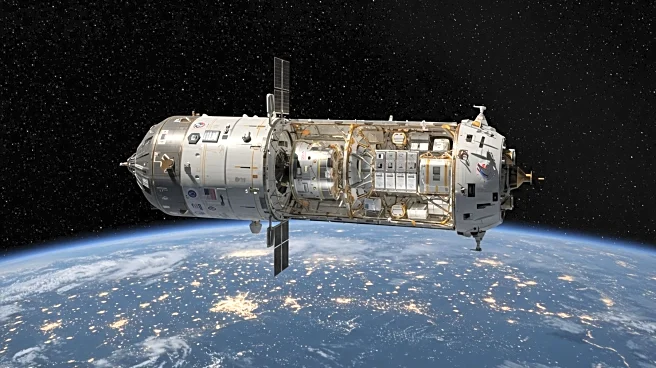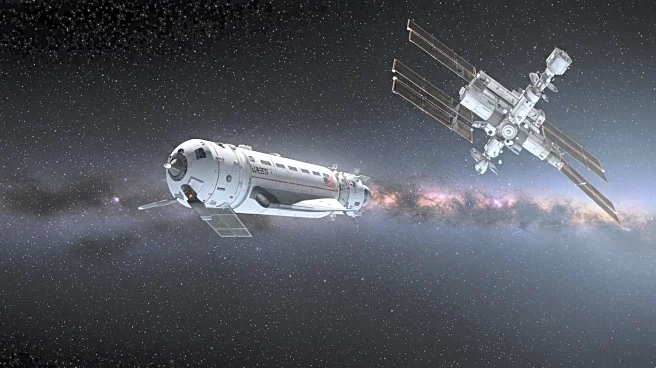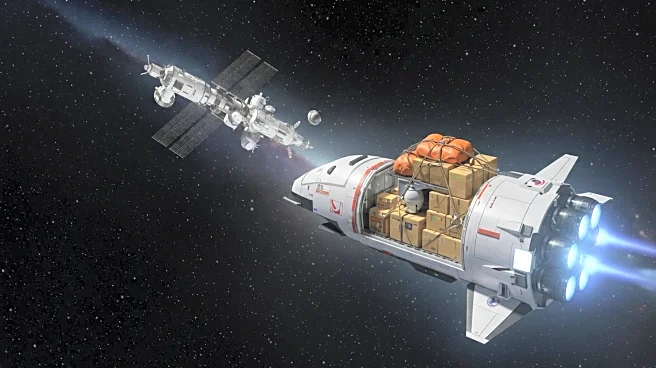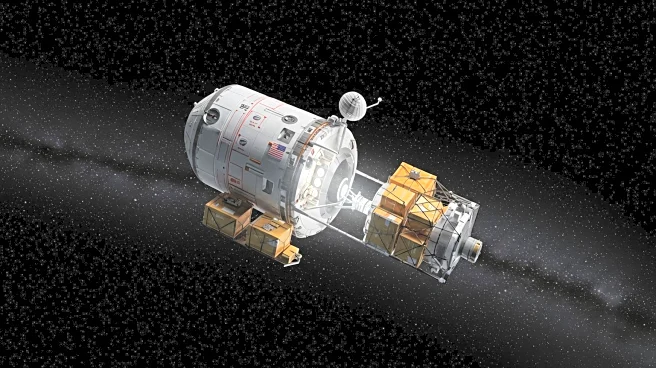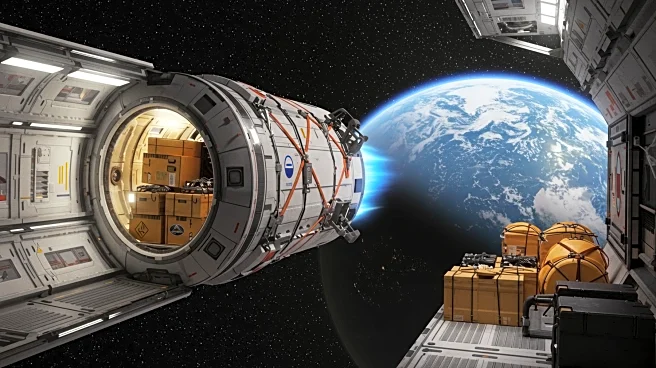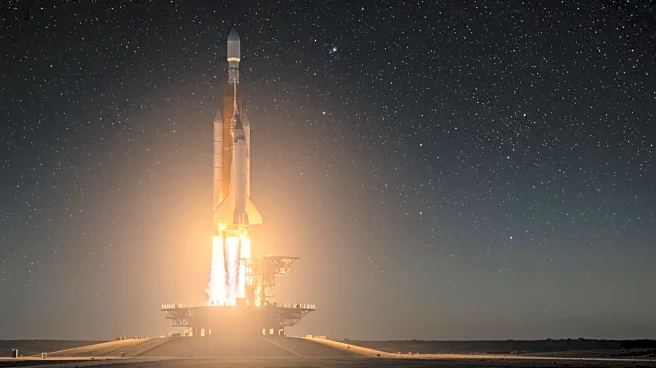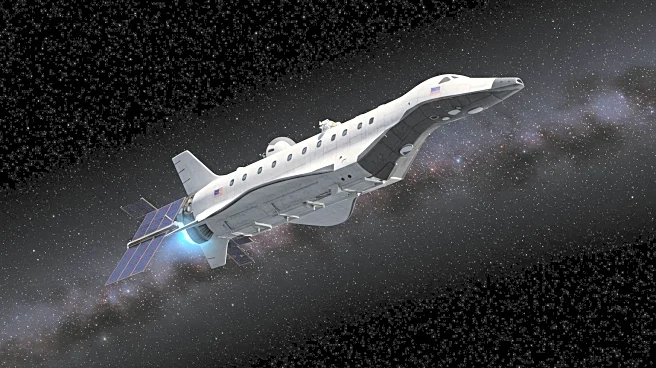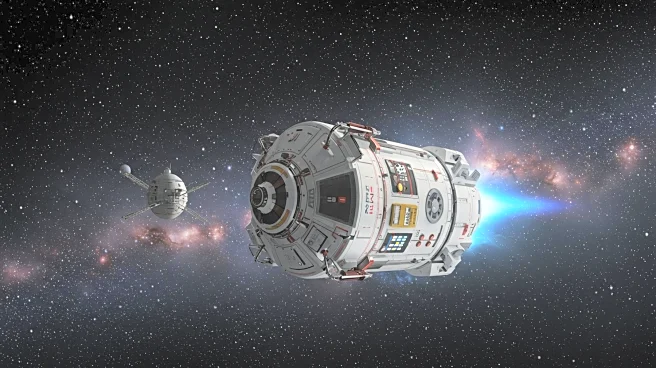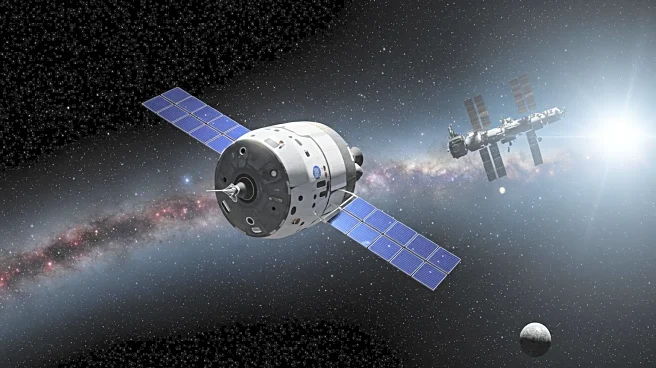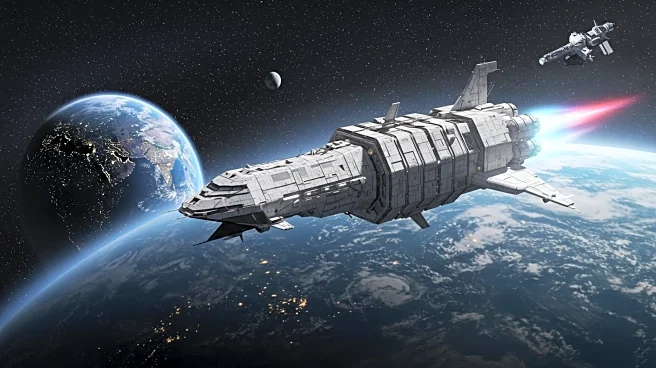What is the story about?
What's Happening?
SpaceX has successfully launched the CRS-33 mission, marking a significant milestone in space exploration and the ongoing partnership with NASA. The mission involves the Dragon spacecraft, which was launched aboard a Falcon 9 rocket, carrying over 5,000 pounds of essential supplies to the International Space Station (ISS). This cargo includes not only daily necessities for astronauts but also a variety of scientific experiments. Notable among these are biomedical studies, tissue engineering projects, and stem cell research, all of which are crucial for advancing scientific knowledge in microgravity environments. The mission also introduces the 'boost trunk' feature, allowing reboost maneuvers to maintain the ISS's orbit, highlighting the innovative technologies being employed.
Why It's Important?
The CRS-33 mission underscores the critical role of private companies like SpaceX in supporting the ISS and advancing space exploration. By delivering essential supplies and scientific experiments, the mission facilitates ongoing research that could lead to breakthroughs in both space and terrestrial applications. The partnership between NASA and SpaceX through the Commercial Resupply Services program exemplifies the growing collaboration between public and private sectors in space endeavors. The innovative technologies, such as the boost trunk, enhance the capabilities of space missions, ensuring the ISS remains a vital platform for scientific discovery.
What's Next?
Future missions are likely to continue leveraging the advancements demonstrated in CRS-33, with potential enhancements in cargo delivery and scientific research capabilities. The success of this mission may encourage further investment and innovation in space technologies, potentially leading to more frequent and efficient resupply missions. Stakeholders, including NASA and private space companies, will likely explore additional collaborative opportunities to expand the scope and impact of space exploration efforts.
Beyond the Headlines
The advancements in scientific research facilitated by the CRS-33 mission could have long-term implications for both space exploration and Earth-based applications. The biomedical and tissue engineering experiments conducted in microgravity may lead to new medical treatments and technologies. Additionally, the success of private-public partnerships in space missions could influence future policy and funding decisions, promoting further integration of private companies in national and international space programs.
AI Generated Content
Do you find this article useful?
